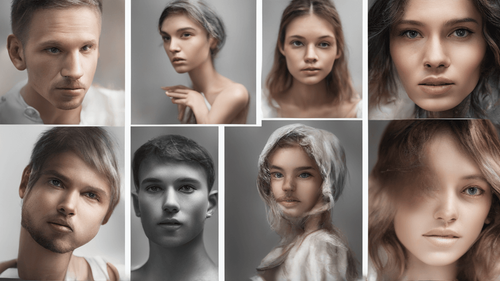
Introduction
In today's rapidly evolving digital landscape, artificial intelligence (AI) has emerged as a powerful tool that's transforming various industries. One of the most fascinating applications of AI is image generation. Imagine being able to create stunning, lifelike images using the power of AI. In this article, we'll dive into the world of AI image generators, guiding you through the process of creating your own. Whether you're an artist, designer, or simply curious about AI, this guide will empower you to unleash your creativity.
Understanding AI Image Generation
AI image generation involves using advanced algorithms and neural networks to create images that closely resemble human-made ones. These algorithms learn from vast amounts of data, allowing them to replicate patterns, styles, and features found in real images. This technology has revolutionized creative processes, enabling professionals and enthusiasts alike to produce breathtaking visuals.
How Does AI Image Generation Work?
AI image generation is powered by Generative Adversarial Networks (GANs), a type of neural network architecture. GANs consist of two main components: the generator and the discriminator. The generator creates images, while the discriminator evaluates whether those images are real or AI-generated. Through a continuous feedback loop, these components improve over time, resulting in increasingly convincing images.
Benefits of AI Image Generators
AI image generators offer numerous benefits, making them a valuable tool for various fields:
-
Unlimited Creativity: With AI, you're not limited by your own artistic skills. The technology can produce an array of styles, genres, and moods, allowing you to explore new creative territories.
-
Time Efficiency: Traditional image creation can be time-consuming. AI generators accelerate the process by quickly producing high-quality images based on your preferences.
-
Endless Inspiration: AI can analyze a dataset of images and generate new ones inspired by the patterns it identifies. This can provide fresh insights and ideas for your projects.
Setting Up Your Own AI Image Generator
Now that you're familiar with the basics of AI image generation, let's explore how you can set up your own AI image generator. We'll walk you through the steps, from selecting the right tools to training your model.
Choosing the Right Framework
To create your own AI image generator, you'll need to choose a suitable deep learning framework. TensorFlow and PyTorch are popular choices known for their flexibility and extensive community support.
Gathering and Preparing Data
Data is the foundation of any AI model. Gather a diverse dataset of images that align with the type of images you want your generator to create. For example, if you're interested in landscapes, compile a dataset of various landscapes.
Selecting a Pretrained Model
Training an AI image generator from scratch requires substantial computational resources and expertise. Consider using a pretrained model as a starting point. Many pretrained models are available online, such as BigGAN and DALL-E.
Fine-Tuning the Model
Once you have a pretrained model, you can fine-tune it using your dataset. Fine-tuning involves adjusting the model's parameters to generate images that match your preferences. This step requires experimentation and iteration.
Generating Your Own Images
After fine-tuning, you can start generating your own images. Feed random noise into the generator, and watch as it transforms the noise into breathtaking visuals. You can also experiment with input parameters to influence the style and content of the generated images.
FAQs (Frequently Asked Questions)
Can I create AI-generated images without coding experience?
Absolutely! While coding knowledge can be beneficial, there are user-friendly tools and platforms that allow you to create AI-generated images without extensive coding skills.
What are some applications of AI-generated images?
AI-generated images have a wide range of applications, including art, design, marketing, and entertainment. They can be used for creating unique visuals, generating product prototypes, and enhancing digital content.
Is there a risk of copyright infringement with AI-generated images?
Yes, there can be copyright concerns when using AI-generated images. It's essential to understand the source of your training data and any potential licensing restrictions.
Can I customize the style of AI-generated images?
Absolutely. Many AI generators allow you to adjust various parameters to customize the style, color palette, and other visual elements of the generated images.
Do AI-generated images have artistic value?
Yes, AI-generated images are increasingly being recognized as valuable pieces of art. They represent a fusion of human creativity and machine learning algorithms, resulting in unique and thought-provoking visuals.
What ethical considerations should I keep in mind when using AI image generators?
Ethical considerations include the responsible use of AI-generated images, potential biases in the training data, and transparency about the image's origin.
Conclusion
Embarking on the journey to create your own AI image generator is an exciting endeavor. This technology empowers individuals from all backgrounds to express themselves creatively and explore uncharted artistic territories. By harnessing the power of AI, you can tap into a wellspring of inspiration and produce images that captivate and inspire. Whether you're an artist pushing boundaries or a hobbyist exploring new horizons, the realm of AI image generation welcomes you with open arms.